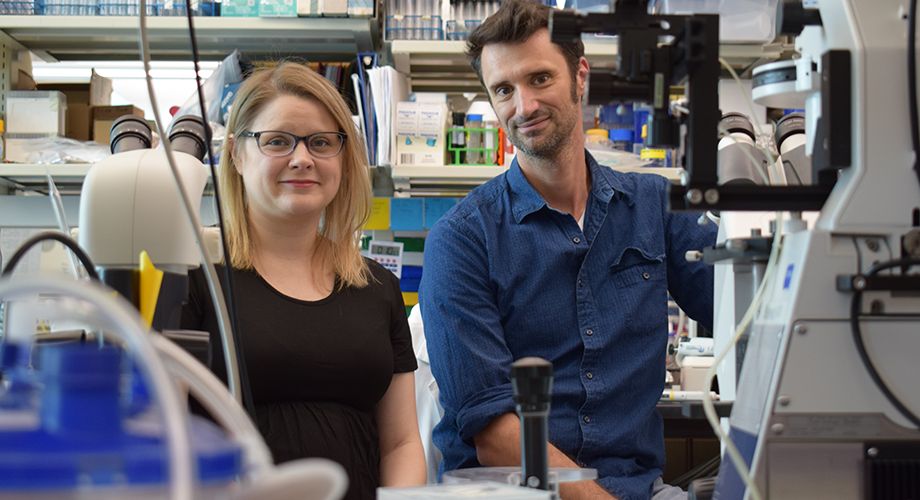
Synapse maintenance depends on network within neurons, study finds
February 04, 2019
JUPITER, FL — Like our cars, our synapses require maintenance to run smoothly. While the scientific community has spent great time and effort learning how synapses drive linkages among our billions of nerve cells, comparatively little time has been spent discerning the process used to keep those connections humming once established.
New research from the lab of Brock Grill, PhD, at Scripps Research in Jupiter, Florida, reveals a role in synapse maintenance for a key protein. Called ATAT-2, short for alpha-tubulin N-acetyltransferase 2, the protein helps maintain the neuron’s connections after they are assembled, explains Grill, associate professor in the Scripps Research Department of Neuroscience. Writing in the journal eLife, Grill and first author Melissa Borgen reveal ATAT-2’s working relationship with another protein, called RPM-1, which serves as hub for a network that includes other molecules, such as PTRN-1 and DLK-1.
Understanding this genetic network may prove important to understanding multiple brain diseases, Grill says.
“We’re putting together a missing piece of the puzzle here,” he says. “Increasing evidence indicates synapse instability is a hallmark of many neurodegenerative diseases, including Alzheimer’s disease.”
So what does ATAT-2 do within nerve cells? ATAT-2 modifies molecular signatures on microtubules, which serve as the chassis of cells by providing structure. Microtubules also serve as a conduit for molecules and organelles that need to move to synapses, such as synaptic vesicles, Grill says. Without proper microtubule function it stands to reason that synapses could crash. In a series of studies involving the model organism C. elegans, Grill’s team found that ATAT-2 functions with RPM-1 to modify and stabilize synapses made by mechanosensory neurons – to protect the cell’s chassis from rusting, so to speak. Without ATAT-2 and this genetic network, not only are synapses lost, but entire nerve cell extensions called axons degenerate as well, Grill notes.
Many questions remain to be studied, Grill notes. For example, the regulators of synapse maintenance in developing neurons as opposed to mature neurons appears to be somewhat different. Also, the order of protein activities needed to stabilize synapses needs further study. Learning these answers are important for adding to basic scientific understanding of nervous system biology, and could have important therapeutic implications, Grill explains.
In addition to Grill and Borgen, the authors of the study, “Synapse maintenance is impacted by ATAT-2 tubulin acetyltransferase activity and the RPM-1 signalling hub,” include Andrew Giles and Dandan Wang, all of Scripps Research.
The research was made possible by a grant from the National Institute of Neurological Disorders and Stroke and support from the Esther B. O’Keeffe Charitable Foundation.
For more information, contact press@scripps.edu

